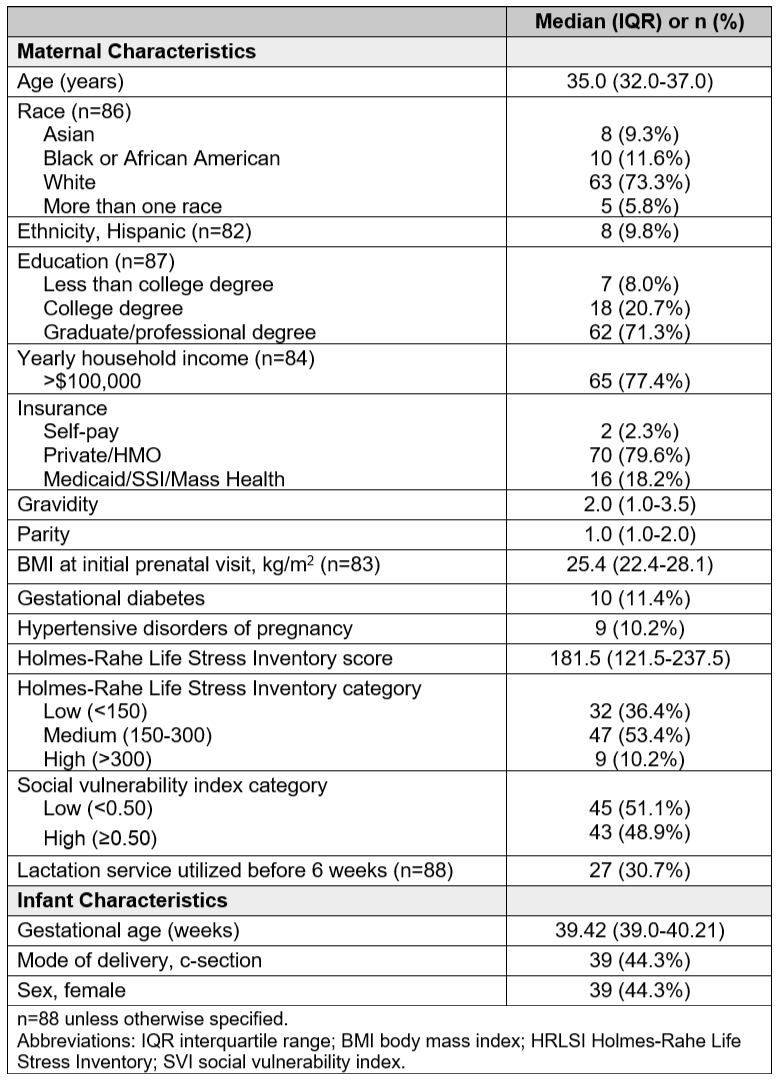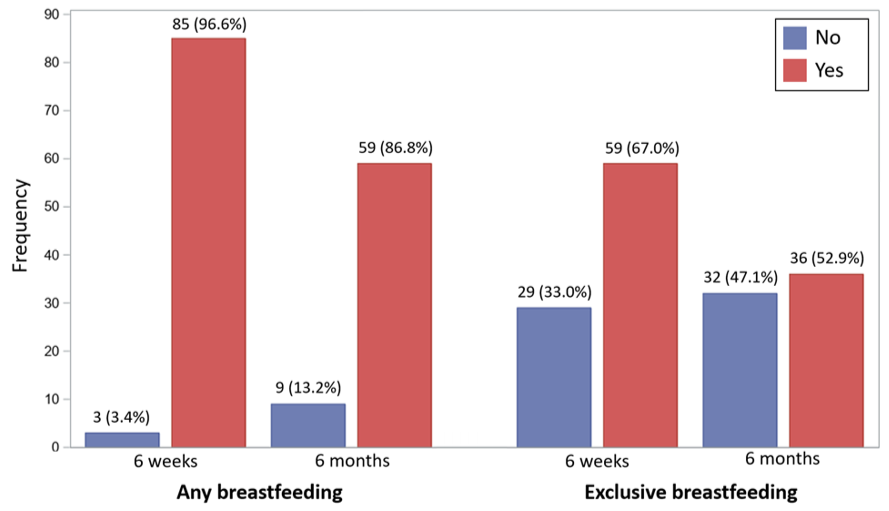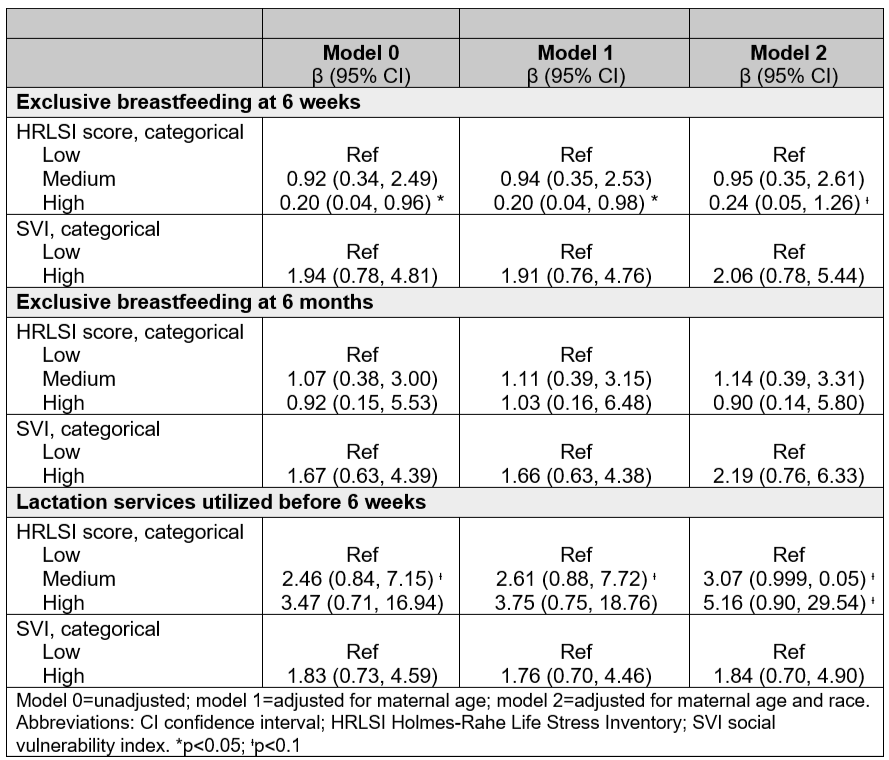Health Equity/Social Determinants of Health
Session: Health Equity/Social Determinants of Health 6
282 - Associations between Maternal Stress and Social Vulnerability with Lactation Outcomes
Sunday, May 5, 2024
3:30 PM - 6:00 PM ET
Poster Number: 282
Publication Number: 282.1966
Publication Number: 282.1966

Chloe Andrews, MS, RD (she/her/hers)
Project Manager/PhD Student
Women & Infants Hospital
Boston, Massachusetts, United States
Presenting Author(s)
Background: In the United States, only 25% of infants are exclusively breastfed for the recommended six months. Many maternal, infant, and systemic factors may contribute to this low exclusive breastfeeding rate, including maternal stress and social vulnerability.
Objective: To determine the associations of maternal prenatal stress and social vulnerability with rates of exclusive breastfeeding and lactation counseling utilization.
Design/Methods: This was an analysis of 88 mother-infant dyads enrolled in an ongoing lactation study in Boston, MA. Mothers who intended to provide at least some breastmilk to their infants and their infants were enrolled at delivery. Phone-based lactation counseling by Certified Lactation Counselors (CLCs) was offered as a benefit to participants. Maternal stress in the year prior to delivery was assessed using the Holmes-Rahe Life Stress Inventory and scores were categorized as low ( < 150), medium (150-300), or high (>300) stress. Maternal social vulnerability index (SVI) was determined using the CDC tool using the zip code provided at enrollment and was categorized as low ( < 0.50) or high (≥0.50) SVI. Participants reported breastfeeding information at 6 weeks and 6 months. CLCs documented dates of lactation counseling encounters. We used logistic regression to determine associations of maternal stress and SVI categories with odds of exclusive breastfeeding at 6 weeks and 6 months and utilization of CLC service before 6 weeks.
Results: Median maternal age was 35 years and the majority of participants were White (73%) and had a college degree (92%). Forty-four percent of infants were female (Table 1). Sixty-seven percent of mothers were exclusively breastfeeding their infants at 6 weeks and 53% at 6 months (Figure 1). In analyses adjusted for maternal age and race, there was a trend towards mothers with high stress having lower odds (OR 0.24; 95% CI 0.05, 1.26) of exclusive breastfeeding at 6 weeks compared to mothers with low stress. There was also a trend towards mothers with medium (OR 3.07; 95% CI 0.999, 0.05) and high (OR 5.16 (95% CI 0.90, 29.54) stress having higher odds of utilizing the study-provided CLC services compared to mothers with low stress. There were no associations between SVI category and exclusive breastfeeding at either time point or CLC service utilization (Table 2).
Conclusion(s): Mothers with higher levels of stress were less likely to be exclusively breastfeeding their infants at 6 weeks and more likely to utilize provided CLC services. Mothers with higher stress may benefit from programs providing postpartum lactation support.



